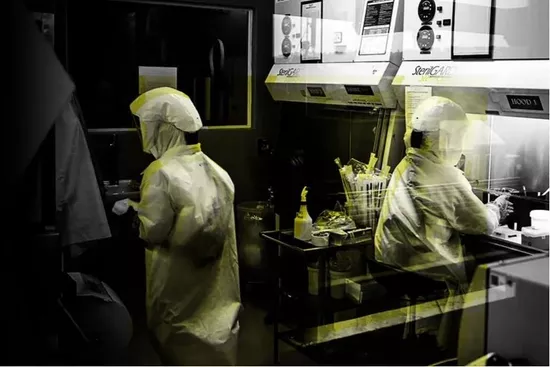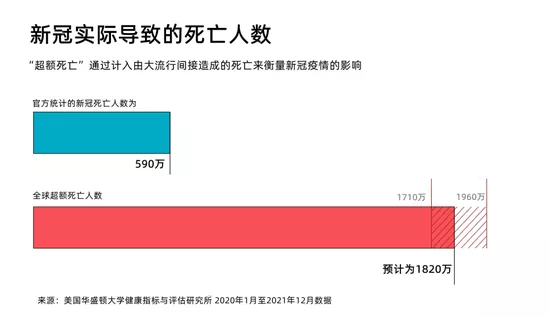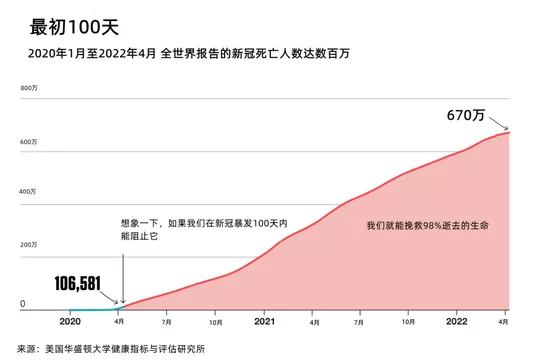Larry brilliant, a famous epidemiologist, once said, "outbreak is inevitable, but pandemic can be prevented." When writing a new book, I often think about this sentence and its implications for the new crown pandemic. On the one hand, it is frustrating to think that we could have avoided a lot of losses and pain by making better choices.

Now, we have been trapped in a pandemic for more than two years. Before the irreversible consequences, the world did not give priority to global health problems, and the result was disastrous. Countries have failed to prepare for a pandemic, rich countries have reduced funding for research and development, and most governments have failed to strengthen their health systems. Although we are finally about to see the dawn of hope, thousands of people still die of COVID-19 every day.

On the other hand, Dr. brillant's words filled me with hope. No one wants to experience a pandemic again - and we don't have to. Outbreak of the epidemic is inevitable, but pandemic can be prevented. The world does not need to live in fear of the next pandemic. If we make key investments that benefit everyone, COVID-19 could become the last pandemic.
This is my new book how to prevent the next pandemic What to say. From the beginning of the outbreak of the COVID-19, I have been committed to fighting the epidemic and have worked with the Gates Foundation and external experts in fighting infectious diseases for decades. It gives me great pleasure to share with you the experience along the way. The valuable experience in dealing with COVID-19 points out a clear way for us to prepare for the next pandemic.
So, what should we do? In my book, I explain the specific steps needed to prepare. The completion of these steps will lead to a plan to eliminate the threat of the pandemic to humanity. These steps, together with the remarkable progress we have made in the past two years in creating new tools and understanding infectious diseases, will reduce the likelihood of mankind experiencing another pandemic.
Imagine a scenario where local public health agencies quickly identify "potential outbreaks" and can operate effectively even in the poorest countries in the world. Any anomalies are shared with scientists for research, and information is uploaded to a global database monitored by a dedicated team.
If a threat is detected, the government will alert and advise the public on travel, social distance and contingency plans. The government will begin to use the tools already available, such as isolation, antiviral drugs that can resist most strains, and tests that can be carried out anywhere.
If that is not enough, innovators around the world will immediately start developing new testing and treatment methods and vaccines. In particular, the speed of diagnosis will be very fast, so as to detect a large number of people in a short time. Since we have reached an agreement in advance on how to safely conduct trials and share results, new drugs and vaccines will be approved soon. Once they are ready, they will be put into production as soon as the factory is in place and approved.
No one will fall behind because we have worked out how to quickly produce enough vaccines for everyone to use. Since we have established a system to deliver drugs directly to patients, all materials will be delivered to the right place at the right time. Communication about the situation is clear to avoid panic.
And all this will happen soon. Our goal is to control the epidemic within 100 days after the outbreak, so that it has no chance to spread to all parts of the world. If we had stopped COVID-19 within 100 days of the outbreak, we could have saved more than 98% of the lives lost.

I hope everyone who has read this book can feel that it is a realistic, achievable and necessary goal to eliminate the threat of pandemic forever. I believe this is something everyone should care about - whether you are an epidemiologist, a policy maker, or a person who has been exhausted in the past two years (due to the new crown).
The most important thing is that we not only have the opportunity to stop things from getting worse, but also have the opportunity to make life better. Even if there is no active epidemic, we can take measures to prevent the next pandemic. These measures will make people healthier, save lives and bridge the health gap between the rich and the poor. Tools to stop the outbreak can also help us find and treat more cases of AIDS. These tools can also protect more children from deadly diseases such as malaria and allow more people around the world to have access to quality care.
my friend Paul Farmer Devoted to bridging the health gap, he died in his sleep in February this year. That's why I want to donate the proceeds of this book to the organization he founded, health partners, which provides amazing health care services to people in some of the poorest countries in the world. I deeply miss Paul, and I am comforted to know that his influence will continue in the coming decades.
If the world has learned anything from the past two years, it is that we must not live under the threat that another virus variant (or another pathogen) may appear at any time. This is a critical moment, and the momentum to eradicate the pandemic forever is stronger than ever before. People who have experienced the COVID-19 will never forget it. Just as a war can change the way a generation looks at the world, the COVID-19 has also changed the way we look at the world.
Although it may not always feel like this, we have made great progress in the past two years. New tools will enable us to respond more quickly next time, and new capabilities will prepare us better to fight deadly pathogens. The world is not ready for COVID-19, but we can choose to be ready for the next time.